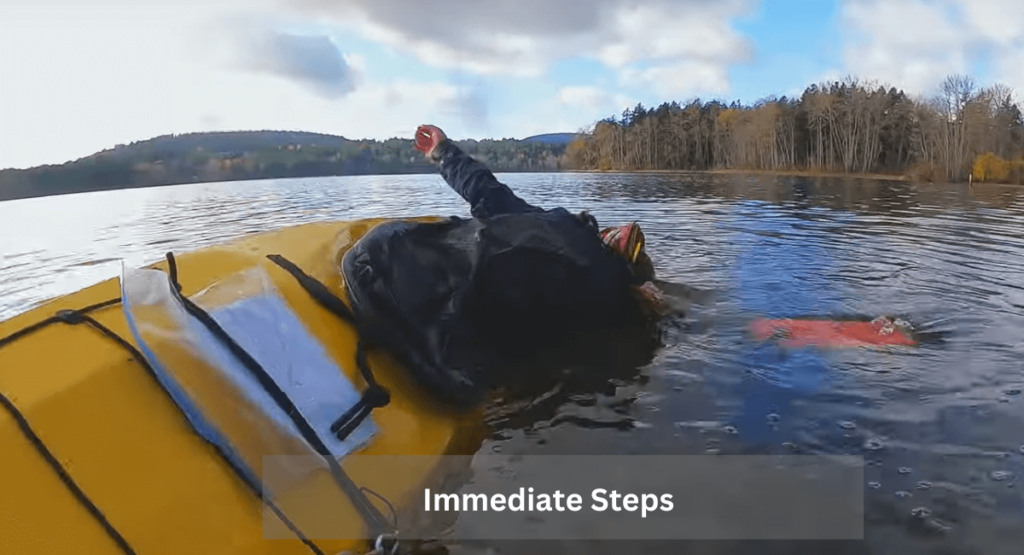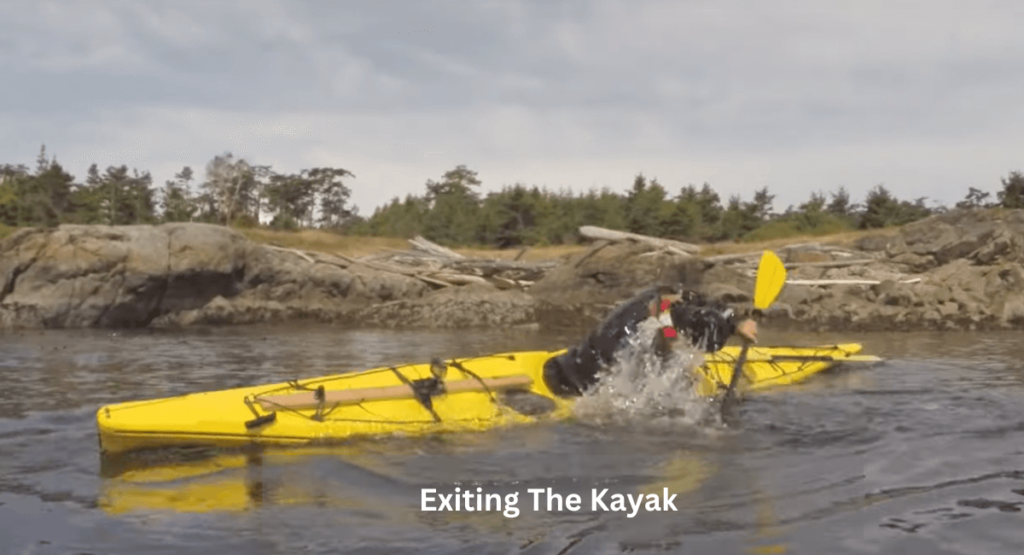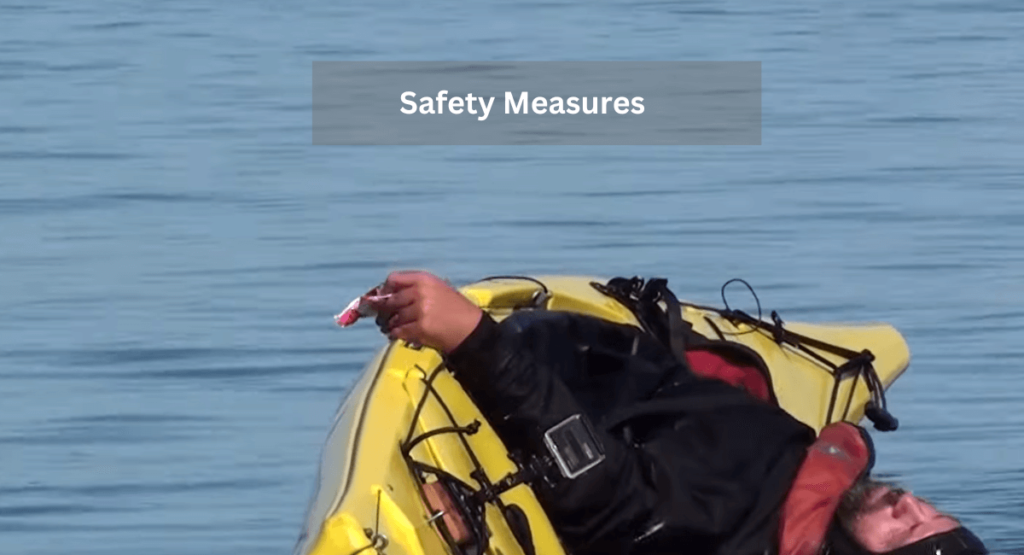If your kayak capsizes, stay calm and try to flip it back upright while holding onto the kayak. In such a situation, it is crucial to remain calm and composed.
Losing your composure may lead to panic and hinder your ability to handle the situation effectively. The first step to take is to hold onto the kayak, ensuring you don’t get separated from it. This will prevent you from drifting away and make it easier to handle the situation.
Next, try to flip the kayak back upright by pushing down on one side while pulling up on the other. If you’re unable to do so, consider swimming to the nearest shore or calling for help. Taking these steps will help you navigate the situation safely.
Preparation
Being prepared for the unexpected is crucial when kayaking. Proper preparation can make all the difference in ensuring a safe and enjoyable experience on the water.
Checking Equipment
Before heading out onto the water, ensure all your kayaking equipment is in good working order. This includes life jackets, paddles, and safety gear.
Understanding Water Conditions
It’s essential to have a good understanding of the water conditions you’ll be kayaking in. Check weather forecasts and tidal charts before setting out.
Immediate Steps

Knowing what to do if your kayak capsizes is crucial for your safety and survival. In the event of a capsized kayak, it is essential to act quickly and calmly. Follow these immediate steps to increase your chances of getting back safely:
Stay Calm
Remaining calm is the key to dealing with any emergency, and a capsized kayak is no exception. Take a deep breath and try to stay calm.
Remember, panicking can only exacerbate the situation. By staying calm, you can think clearly and make rational decisions to ensure your safety.
Hold On To Kayak
As soon as you find yourself in the water, hold on to your kayak tightly. This will prevent it from drifting away and allow you to stay connected to your only means of flotation.
Use both hands to grip the sides of the kayak, keeping yourself as close to the vessel as possible. Holding on to the kayak will also make it easier for others to locate you or provide assistance.
If the kayak is tippy or unstable, try to right it by dragging your body weight across the top of the kayak while holding on to the opposite side.
Exiting The Kayak

Exiting the Kayak
When you find yourself in a situation where your kayak has capsized, it’s important to know how to safely exit the kayak. By following the proper techniques, you can ensure your safety and minimize the risk of any further accidents. In this section, we will discuss two key aspects of exiting the kayak: calm breathing and strategic exit.
Calm Breathing
When faced with a capsized kayak, it’s natural to feel panicked and anxious. However, it’s crucial to remain calm and composed to make rational decisions. One way to achieve this is by focusing on your breathing. Take slow, deep breaths in and out to help regulate your heart rate and keep your mind clear. By controlling your breathing, you can stay calm and better assess the situation.
Additionally, by practicing calm breathing, you can conserve energy and stay focused on the steps you need to take to safely exit the kayak. Remember, panic can cloud your judgment and compromise your ability to make wise choices.
Strategic Exit
Once you have achieved a state of calmness, it’s time to plan your exit strategy. First, assess the surroundings and identify any potential hazards, such as rocks or strong currents. This step is crucial to ensure your safety during the exiting process.
Next, locate the closest side of the kayak to the surface and put your hands on it. This will act as a guide as you prepare to exit the kayak. Slowly and steadily, begin to push yourself out of the kayak and towards the surface. Aim to keep your body as close to the kayak as possible to maintain balance and stability.
As you resurface, be mindful of your surroundings and any obstacles that may be present. Take a moment to regain your stability before moving towards a safe area, away from any potential dangers.
Remember, the key to a successful exit is remaining calm, assessing the situation, and executing a strategic plan. By practicing these techniques, you can ensure your safety and navigate through any challenging situation that arises.
Safety Measures

Wearing A Life Jacket
When kayaking, always wear a properly fitted life jacket to stay buoyant in case of a capsize.
Ensure the life jacket is US Coast Guard-approved for your safety on the water.
Regularly check the condition of your life jacket to ensure it is working effectively.
Signaling For Help
In the event of a capsize, stay calm and assess your surroundings before signaling for help.
Use a whistle or a raised arm to attract attention from other boaters or bystanders.
Wave a brightly colored object like a paddle to signal distress to passing watercraft.
Recovery Techniques
Recovery Techniques are essential skills for kayakers to master to stay safe on the water. Knowing how to recover from a capsized kayak can make all the difference in an emergency. Below are some essential recovery techniques that every kayaker should be familiar with.
Emptying Water
Once your kayak capsizes, the first step is to empty the water before attempting to re-enter the kayak. To do this, flip the kayak upside down and use a bilge pump or simply lift one end of the kayak to drain the water out. Make sure to secure any loose items that may have fallen out during the capsizing beforehand to prevent them from getting lost.
Re-entering Kayak
After emptying the water, the next step is to re-enter the kayak. There are several methods for re-entering a capsized kayak, including the paddle float re-entry and the cowboy re-entry. The paddle float re-entry involves using a paddle float to stabilize the kayak while getting back in, while the cowboy re-entry involves climbing back in without using a paddle float. Choose the method that you are most comfortable with and practice it in a controlled environment before attempting it in a real-life situation.
Post-capsizing
After a kayak capsizing incident, the post-capsizing period is crucial. Here’s what you need to do during this stage.
Assessing Physical Condition
First, check on your physical condition. Ensure you and anyone else involved are free from injuries. It’s crucial for safety.
Reviewing Incident
Review the incident to understand what caused the capsizing. This will help prevent similar situations in the future.
Frequently Asked Questions Of What To Do If Your Kayak Capsizes
What Should I Do If My Kayak Capsizes?
If your kayak capsizes, stay calm and hold onto the kayak. Try to flip it over and climb back in. If you can’t, swim to the nearest shore or wait for help while holding onto your kayak for buoyancy. Always wear a life jacket for safety.
Conclusion
In moments of kayak capsizing, stay calm, re-enter safely, and paddle on. Preparedness is key in handling emergencies. Remember to practice techniques for self-rescue. Stay informed, stay safe, and enjoy your kayaking adventures with confidence. Be ready for the unexpected and keep exploring the waters!
